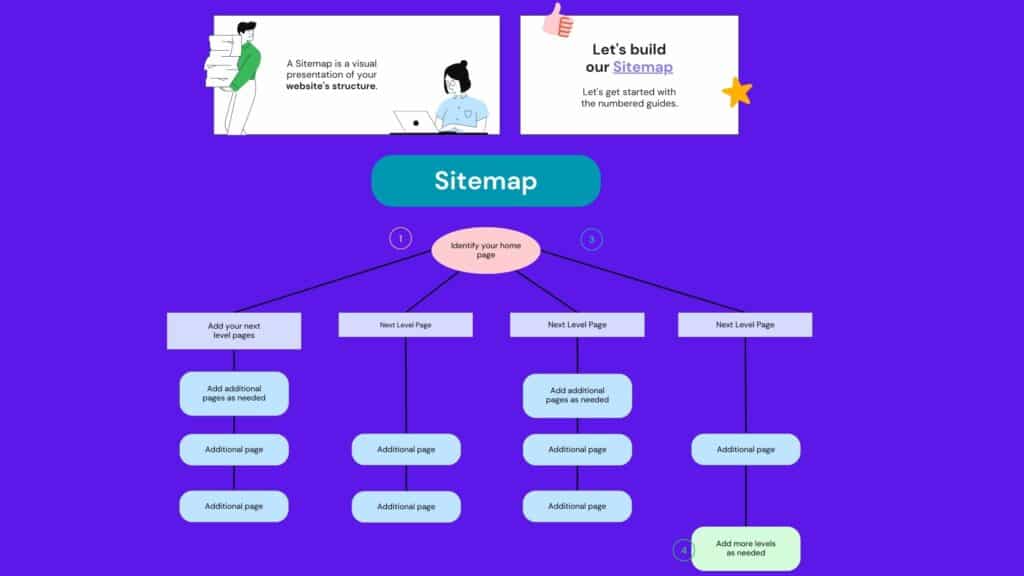A sitemap is part and parcel of every website where it helps search engines find and index your website’s content easily. This tutorial will demonstrate steps to create sitemap that is dynamic by using Node.js so that your sitemap is always up to date with the changes taking place at your website.
What’s The Need For A Dynamic Sitemap?
Dynamic sitemaps are different from static sitemaps in that they are refreshed automatically when you insert or edit some content for your site. Some of the advantages are the following:
- Instant Refresh: Automatic notifications to search engines notifying them of new pages or pages that require changes.
- Boosts SEO: Aids crawlers to locate and index the information continued in your website quickly and precisely.
- Better User Exerience: Makes sure visitors cannot get lost trying to browse around your website.
- Grows With Your Website: Though there are changes to your website being sitemaps remain solid.
How to Create a Dynamic Sitemap using Node.js
One of the primary goals of web development is allowing your website to be crawled by the various search engines. Dynamic sitemap are quite useful for this purpose. As opposed to static sitemap, dynamic sitemap change whenever there is a change in your web pages. This guide will walk you through on how to develop a dynamic sitemap using Node.js.
Step 1: Getting started with the Node.js environment
Before everything else, ensure that Node.js is installed in your system. If you haven’t done this, proceed to the official Node.js page and download the installation package. Once the installation is complete, everything should be operational. You can verify this by enter ‘node -v‘ in your terminal.
Step 2: Make sure to install the required packages
To commence the development of your dynamic sitemap, you will require certain packages for ease in managing the server and the sitemap development. Open your project folder in the terminal and run this command:
npm install express express-sitemap-xml
expressis your go-to for creating a straightforward server.express-sitemap-xmlwill do the heavy lifting of generating the XML sitemap.
Step 3: Building Your Server
The next thing that we are going to do is create a new file with the name server.js in the project folder you created. In this file, you will set up the initial scaffolding for your Express server and plan the paths for your dynamic sitemap. Here is a simple example to get you off the ground:
const express = require('express');
const sitemap = require('express-sitemap-xml');
const app = express();
const port = 3000; // Feel free to pick any available port
// Define your routes here
app.get('/sitemap.xml', sitemap);
app.listen(port, () => {
console.log(`Server is running on port ${port}`);
});
Step 4: Generating Your Sitemap
As we know the basics are out of the way, let’s go on creating the logic for generating the dynamic sitemap you have designed. You need to remember to stay in the same server.js file. Add the code below so that the server generates your website’s sitemap depending on its content:
const sitemap = require('express-sitemap-xml');
const sitemapConfig = {
http: 'https', // Use 'http' for non-secure websites
url: 'your-website-url.com', // Insert your website URL
map: {
'/': ['get'], // Add the routes you want in the sitemap
'/about': ['get'],
'/products': ['get'],
// Feel free to include more routes
},
};
app.get('/sitemap.xml', sitemap(sitemapConfig));
Step 5: Running Your Server
Now, it’s showtime! To test the Node.js server that is performing all the changes we just implemented, navigate to your project folder in the terminal, and type the command below:
node server.js
Your server is going to fire up and in the terminal, you will see the message “Server is running on port 3000” or whichever port you have chosen.
Step 6: Getting Access To Your Dynamic Sitemap
Congratulations! You’ve successfully developed a dynamic sitemap from Node.js. To access your dynamic sitemap, all you need to do is open a web browser and type in http://localhost:3000/sitemap.xml or the port you chose. Look at that! The XML sitemap with all the routes you defined in the sitemapConfig will appear on your screen.
With these simple steps, you can say you have utilized Node.js in building a dynamic sitemap that adjusts itself according to the changes on your website. This guarantees that search engines get the latest information, which increases the number of people visiting your site, positively impacting search engine optimization focus areas. Now you have a dynamic sitemap that works like a perfectly tuned machine helping your site succeed!
Using Node.js for Testing and Validating the Creation of Dynamic Sitemaps
Developing a dynamic sitemap with the use of Node.js combines the ease of use with the efficiency web devs are looking for when constantly trying to balance the update of new content on their website with keeping the search engines answers question related to their sitemap. Like many other important facets of site optimization, it is equally important to make sure the process of dynamic sitemap creation is free of errors and any other issues that may disrupt its functionality. Testing and validation are used to check these parameters – processes that certify that the dynamic sitemap is running optimally.
The Importance of Testing and Validation
Testing and validation goes hand in hand with setting up quality control for your dynamic sitemap creation. They enable you to identify any problems with the sitemap before it is uploaded. Effective testing verifies that the right XML sitemaps are created, all pages are included, and that your sitemap responds to all changes made on your website. Validating a dynamic or automatic sitemap simply checks whether it was created following the rules and instructions from search engines.
The Various Methods of Testing and Validation
- Unit Testing: To begin, you will start with unit testing which involves assessing different parts of the code that creates the dynamic sitemaps. This checks that all functions and modules are operating as they should, and outputting the correct results. Errors that may arise are fixed early on through unit testing since troubleshooting is more targeted.
- Integration Testing: This part involves looking at how different parts within the dynamic sitemap creation system interact with each other. Confirm that different modules such as data collection and xml generation work together without any problems.
- Functional Testing: This is the test carried out in various situations to confirm that the dynamic sitemap works as expected. Confirm the different forms of content, URLs and data sources, that need to be served. Let’s break down what we can do to prepare for the scenario where your website doesn’t work.
- Performance Testing: You need to stress test the creation of the sitemap. You need to traffic spike the servers and see if it can handle a lot of simultaneous requests without crashing or performing slowly.
- Automated Testing: Set automated tests that will occur upon every modification made to the dynamic sitemap generation code which results in consistent testing during development and every update i.e. ensure coverage.
- Manual Testing: In spite of the effectiveness of automated testing, manual testing has its place. You need to run through all test scenarios to find issues that may not be found by your automated test scripts.
Validation Unveiled
When it comes to validation, all the work you defined in the first section is to make sure you satisfiy the requirements placed by the XML sitemaps protocol. This protocol says how the sitemaps should be structured and which rules should be followed to make it possible for the search engine to read it correctly.
- XML Structure: Check if the XML structure of the created dynamic sitemap is okay and conforms to the expected norms. Check whether there are correct open and close tags and if there is proper nesting of tags if attributes are present.
- URL Format: Make sure that every URLs specified in the dynamic sitemap follow the correct format and standards.
- Valid URLs: Ensure that all the URLs you put in the dynamic sitemap lead to an existing pages on your site.
Make sure all the information on your dynamic sitemap corresponds with the information present on your website. Everything such as descriptions and metadata are also included. That means there are no inaccessible dynamic links in your sitemap including broken links.
Next step is to start testing at an early stage. That includes implementing a test during the development phase till the very end. Furthermore, make sure you keep refining your dynamic sitemap till the changes on the website such as addition or deletion of a page. Lastly ensure that all your test cases are documented alongside the actual results.
It is vital that you keep your pages up to date. In other words, you have to tweak your testing and framework to adapt to the structural changes on the website as well as search engine policies.
To conclude, testing and validation are key steps in ensuring that you build a functional and robust dynamic sitemap with Node.js. Through testing and validation of your dynamic sitemap, you will make sure that, at the very least, your dynamic sitemap is accurate, responsive to changes, and up to standard with search engines. These activities speak to quality assurance which increases user engagement, improves visibility in the search engines, and significantly helps to succeed and grow your website.
Conclusion
The creation of dynamic sitemaps with the aid of Node.js maintains the ease in which search engines index your website content, plus any new pages that are added with the growth of your site. Notably, this practice is efficient, accurate, and significantly boosts your SEO targets. In this article, we discussed ways to create a dynamic sitemap generator for website.
Also Read: 6 Most In-Demand Programming Languages to Learn in 2023



